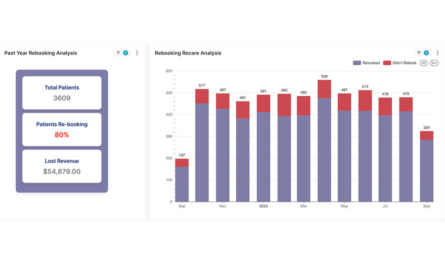Editor’s Note: The following is a conversation with Albert H. Guay, DMD, Chief Policy Advisor, Office of the Executive Director, American Dental Association
A conversation on trends, and the future of dentistry, with the ADA
Efficiency in Group Practice: How have you seen the marketplace for dental practices and groups change in the last 5-10 years?
Albert H. Guay, DMD: Groups in all fields of healthcare have been traditionally organized for a number of reasons, primarily to integrate care, to be a part of larger organizations (mainly hospitals), and to accommodate the need of 24-hour, seven-days-a-week availability. Now, a major factor in dentistry at least, is the need for greater business efficiency as a way to control healthcare costs. New groups are forming and existing groups are expanding to respond to the consolidations that have occurred in the payer community. For various reasons, group practices have found a pool of new dentists and pre-retirement dentists available as associates in their practices.
Efficiency: How are group practices positioned in the current marketplace?
Guay: The majority of Americans are well served by the current structure of our dental care system. The segment of our population that is ripe for expansion is the lower socio-economic stratum. The numbers are large and access to dental care for that group is an issue. Group practices that are efficiently managed may be able to economically accommodate the underserved. The number of dentists available for employment by large group practices will likely increase or remain stable in the near future.
Efficiency: What are the biggest challenges facing group practices today?
Guay: Some of the challenges facing group practices, especially large group practices, are: the tradition of dental offices being located “where the patients are;” centralization of treatment facilities may be resisted since the opportunity or acquisition costs to patients may be unacceptable to some; the personal relationship between dentist and patient, which is a strength of individual practices, may be reduced if patients see different dentists in a practice. Group practices will most likely be subjected to increased scrutiny, especially from government assistance programs, due to negative news stories about their medical services.
Efficiency: What are some of the best practices you’ve seen of group practices who are having success?
Guay: Success has been related to economies of scale in purchases, etc. (but not to the degree that one would assume without actually examining the numbers) as well as efficient centralized management such as increased marketing, more effective use of facilities and on-going collection and analysis of meaningful practice data.
Efficiency: Has there been any impact in regards to health reform?
Guay: The most significant impact of health care reform is the mandated increase in the number of children who will qualify to receive dental benefits. Many of those children could become patients of dentists working in group practices.
Efficiency: What about customer expectations, have they changed?
Guay: It’s hard to detect any changes in patient expectations, since this is a new and evolving dental marketplace. We know that the public expects that good dental care be available to all children. We’ll have to wait and see what happens.
Sidebar: ADA: Be Proactive
Dental group practices, and the dental industry in general, need to have a “proactive” strategy in order to successfully navigate the current and future trends in the marketplace. This is according to a comprehensive analysis the American Dental Association conducted in a report titled, “A Profession in Transition: Key Forces Reshaping the Dental Landscape.” The report summarizes important findings of an environmental scan carried out by the ADA as part of the ADA’s 2015-20 Strategic Plan development process.
“Given the significant environmental changes on the horizon, including expected changes in the dental care delivery system, this analysis shows that the dental profession must prepare by shaping a proactive strategy to navigate the challenges and opportunities ahead,” said Dr. Robert A. Faiella, ADA president.
Key findings
According to the ADA, some of the key findings include:
- While more children have been visiting the dentist, primarily due to the expansion of public insurance programs, dental care use has declined among working age adults, particularly the young and poor, a trend that emerged prior to the recent economic downturn. Dental benefits coverage for adults has steadily eroded in the past decade.
- Total dental spending in the United States slowed considerably in the early 2000s and has been flat since 2008. This trend is expected to continue, resulting in dentists looking for more efficient ways to serve their patients, as well as a likely increase in consolidating dental practices.
- The Affordable Care Act (ACA) is expected to expand children’s dental benefits, both public and private, but it does not address the many key access-to-care issues facing adults.
- The ACA is also expected to promote increased coordination of care, providing an opportunity to bridge the gap between dental and general health.
For the full report, visit: http://www.ada.org/sections/professionalResources/pdfs/Escan2013_ADA_Full.pdf





